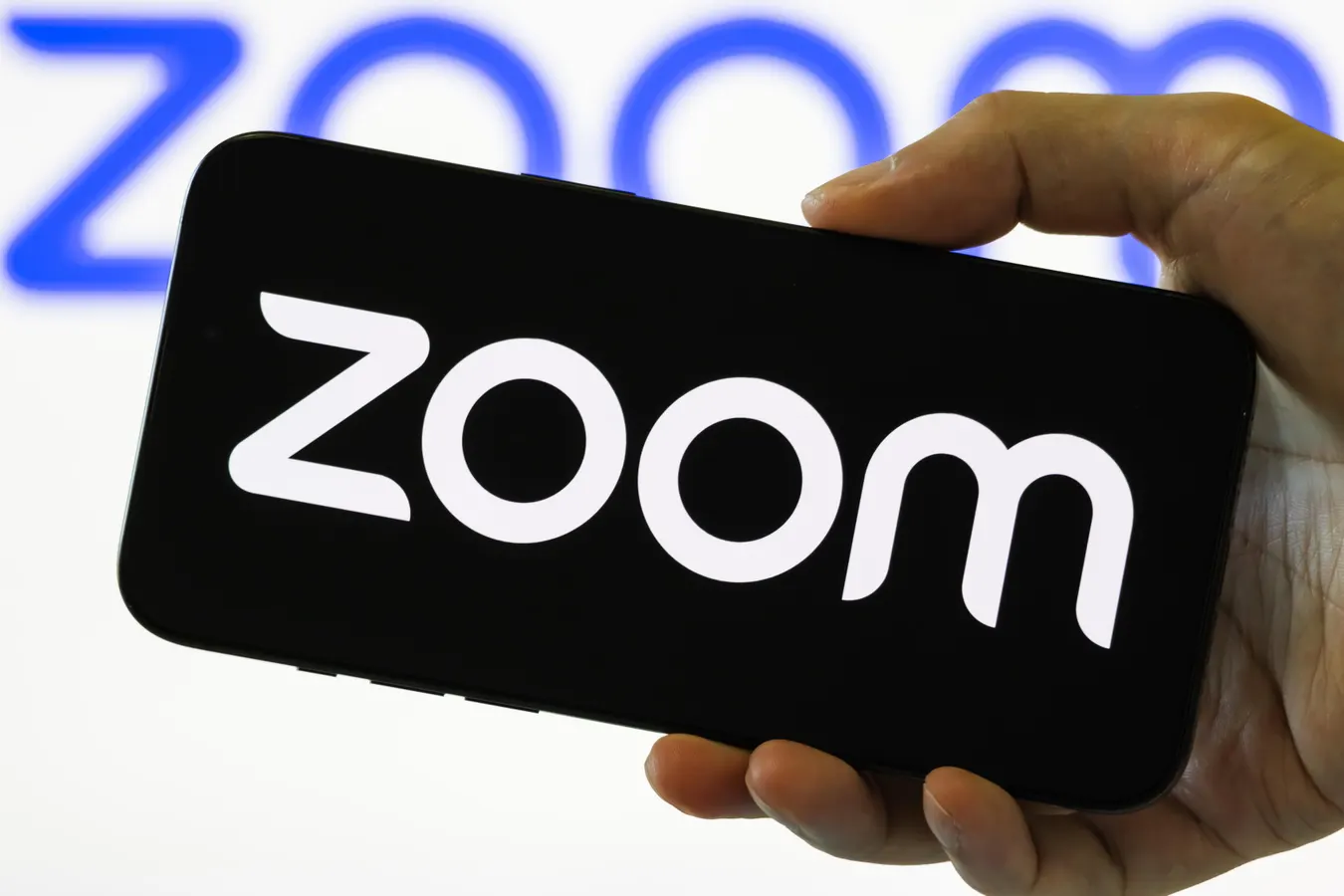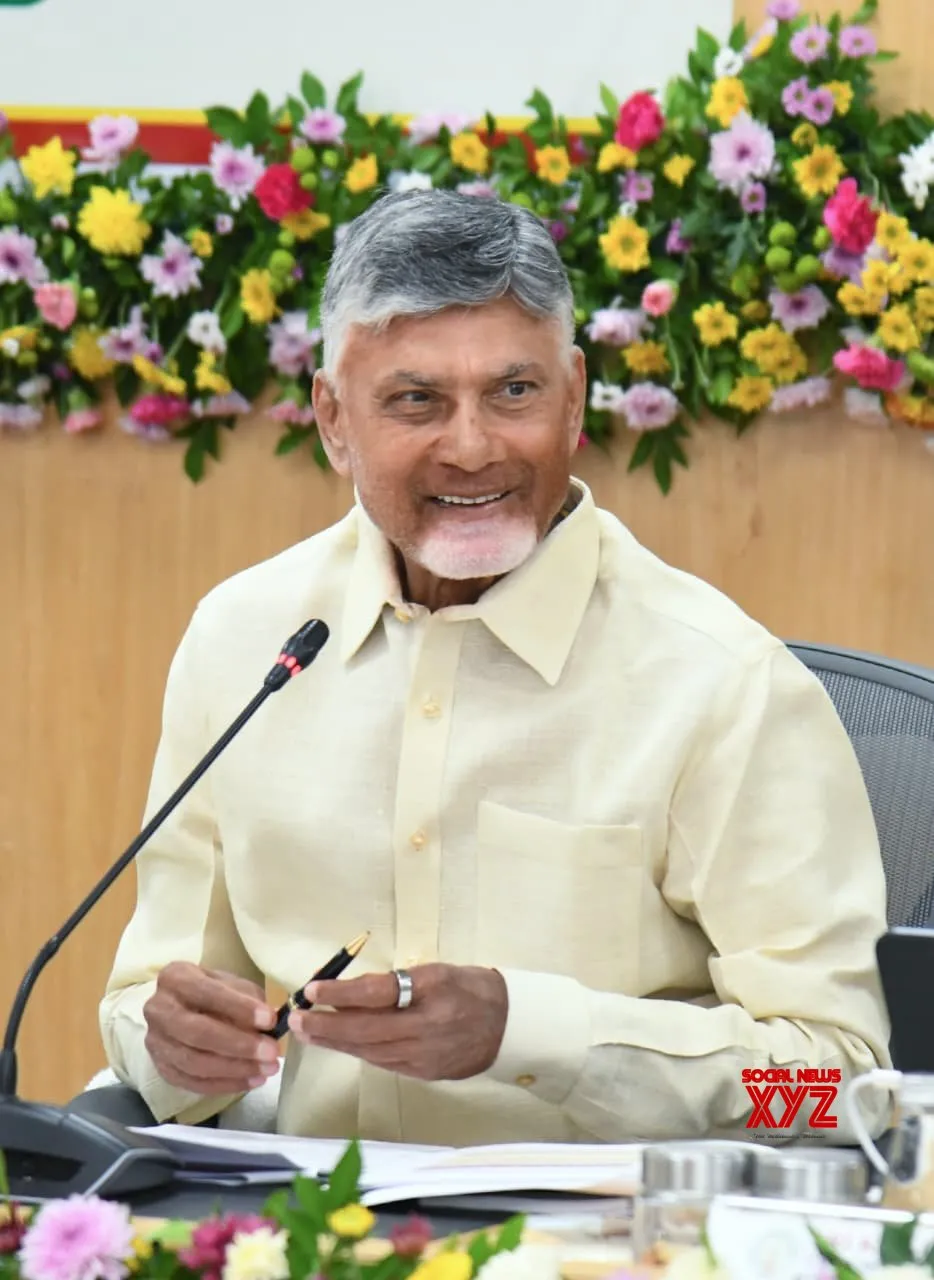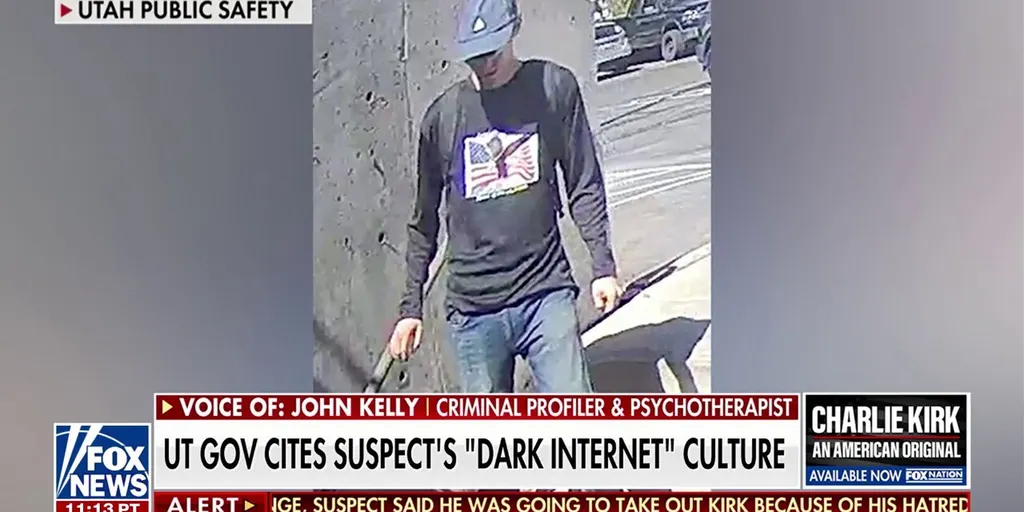By Forbes Staff,Megan Poinski
Copyright forbes

It’s been a year and a half in the making, but there might finally be a deal with China for a U.S. entity to operate TikTok. This week, President Donald Trump and Treasury Secretary Scott Bessent suggested the administration had come to an agreement with China about the social video app, though many details remain unclear. Bessent said there is currently a “framework” for something workable, and the deal could be approved by Trump and Chinese President Xi Jinping as soon as Friday.
The Wall Street Journal reported some details of the proposed deal Tuesday. A coalition of U.S. investors would control 80% of a new U.S. company that will operate TikTok, with the remaining 20% staying in Chinese hands. Major investors would include Oracle, Silver Lake and Andreessen Horowitz. Oracle would handle the data at its Texas facilities, and U.S. users would be asked to switch to a new app controlled by the U.S. entity, which the Journal said has been built by TikTok and is now undergoing testing.
Of course, these are only proposals; nothing will be finalized until a deal is signed. And even then, it can take time to work out all of the details. If all goes according to plan, the deal is expected to close in 30 to 45 days, CNBC reported. (But the app will not be going dark in the meantime; Trump signed another 90-day delay of TikTok’s deadline to sell this week.)
Will this potential deal fix the problems with TikTok? That depends. While user data from the app will not be used by China to spy on Americans—which was the concern that drove the legislation to begin with—there are still concerns about the new app giving outsized control to the U.S. government. Forbes’ Emily Baker-White writes that to eliminate the risk of TikTok being misused by any government, the deal will need to plant ownership and control clearly in the private sector, walling it off from government interference. Considering that the Trump Administration has already used unprecedented means to intervene in areas that the government traditionally stays out of—like broadcast TV, universities, law firms and tech companies—it remains to be seen if that will happen.
Thanks to the Covid-19 pandemic, everyone knows what Zoom is and does. However, the company has continued to build and develop beyond videoconferencing, and is hoping to position itself as an AI-driven total collaboration solution. CMO Kim Storin is leading that charge. I talked to her about how she’s planning to broaden the scope of how people think of the company. An excerpt from our conversation is later in this newsletter.
This is the published version of Forbes’ CMO newsletter, which offers the latest news for chief marketing officers and other messaging-focused leaders. Click here to get it delivered to your inbox every Wednesday.
ATTENTION ECONOMY
Media outlets stage on the Utah Valley University campus the day after Charlie Kirk was killed.
Francisco Kjolseth/The Salt Lake Tribune/Getty Images
Following last week’s assassination of Turning Point USA founder Charlie Kirk, conservative media has seen sky high numbers. Kirk, a right-wing activist whose sometimes controversial anti-liberal statements inspired young conservatives and who was revered by President Donald Trump and his allies, was a master at messaging, and had been credited with swinging more of the youth vote toward Trump last November. Kirk was shot and killed at an outdoor rally at Utah Valley University, and the man charged with his death has said he was motivated by Kirk’s “hatred,” writing in a text message that “Some hate can’t be negotiated out.”
Conservatives responded by calling Kirk’s death a left-wing attack on their beliefs, and have drawn viewers and listeners to broadcasts discussing the assassination. Vice President JD Vance hosted Kirk’s podcast, “The Charlie Kirk Show,” from his office in Washington, D.C. on Monday, and Kirk’s podcast has the No. 1 ranking on Apple Podcasts. Between Kirk’s shooting last Wednesday afternoon and the following morning, Forbes’ Conor Murray writes that some conservative pundits had some of their biggest streaming audiences ever. Megyn Kelly got 3.9 million views on a nearly three-hour livestream on her YouTube channel, while a Daily Wire YouTube livestream, as well as YouTube channels of hosts including Michael Knowles and Ben Shapiro, got at least 3.8 million views combined.
But it wasn’t just streaming media that saw more viewers. On Saturday night, with Kirk’s killing still dominating the news, conservative network NewsNation outperformed CNN and MSNBC during prime time, writes Forbes senior contributor Mark Joyella. The network consistently won many demographics, including those between the ages of 25 and 54—the group most valued by advertisers. At 8 p.m. Saturday, NewsNation’s special report, The Killing of Charlie Kirk, saw a 300% surge in viewers compared to the average programming in that time slot this year.
IN THE NEWS
It isn’t quite fall yet, but analysts are already trying to predict what holiday spending will look like. So far, many are guessing there will be modest growth—if any—for most shopping, with a big assist from AI in e-commerce.
PwC’s holiday outlook survey came out at the beginning of the month, and found that consumers were planning to cut back on holiday spending this year by an average of 5%, writes Forbes senior contributor Joan Verdon. Gen Zers plan to cut back the most, and anticipate spending 23% less. It isn’t just a holiday budget cut that respondents are considering: 84% of consumers plan to reduce their spending over the next six months.
Still, Deloitte projects holiday spending to reach between $1.61 trillion to $1.62 trillion, about 2.9% to 3.4% more than last year, Verdon writes. While that would be an increase over 2024, it’s predicted to be less than last year’s 4.2% spending growth. But Deloitte doesn’t see the more gradual increase as problematic, as the expected rate is “more in line with” the average growth rate before the Covid-19 pandemic. The projection also takes economic uncertainty into consideration, and Verdon writes that retailers should use this opportunity to emphasize their value propositions.
For e-commerce, Salesforce predicted a record $1.25 trillion in holiday sales—a global increase of 4% and 2.1% in the U.S., Verdon writes. AI and agents are expected to drive 21%—or $263 billion—of global sales.
NOW TRENDING
It’s been a challenging year for business across the board, which can lead to stress and burnout. I spoke with David Astorino, a senior partner at RHR International, about the executive coaching he’s done this year, trying to help executives better deal with the pressures of today. In my interview, more fully featured in this week’s Forbes CEO newsletter, he outlined how executives first need to get themselves to a place where they are in balanced physical health—not skipping sleep or eating unhealthy food, but not burning their bodies out with extreme training either.
Next, they need to work on their mental health by talking with someone about the challenges they are facing. “We want CEOs showing up as emotionally attuned as possible, whether that’s showing up to inspire you on the vision of the company, or to be a little tougher on the performance,” Astorino said. “How I do that is so critical because it just cascades and has ramifications throughout the whole company.”
And finally, executives need to realize that—especially right now—they have an impossible job. That realization, Astorino said, can help them understand that they have to let go of the wheel a bit; working harder or doing more won’t solve all of the issues they face today.
“That’s hard for people,” Astorino said. “Who wants to be a CEO? Who wants to be a business leader? They want to solve problems. They want to win. They’re competitive and they are ambitious, and they want to have the mantle of responsibility.”
“And so you have to allow a lot more space to tolerate things that I cannot control,” he said.
The Game Plan To Reposition Zoom
Zoom CMO Kim Storin.
Zoom, Cheng Xin/Getty Images
One of the companies that made the Covid-19 pandemic more bearable was videoconference platform Zoom. But in the years since, Zoom has continued to grow and develop beyond videoconferencing, and is striving to position itself as an AI-powered collaboration platform. Leading the charge is CMO Kim Storin, an experienced marketer who joined the company in April, and who led the marketing for repositioning efforts at AMD and IBM. Today, Storin and her colleagues will talk collaboration at the annual Zoomtopia virtual conference. I talked to her beforehand about her mission at Zoom. This conversation has been edited for length, clarity and continuity.
What are some of the challenges that you faced doing this work: Broadening what people think of for a company like Zoom, that everybody knows and associates with one thing?
Storin: The double-edged sword. (Laughs.) The one thing that I underestimated was the power of the passion for people that use Zoom. That’s really been incredible to see.
On the flip side, one of the things that was surprising to me is the next generation has a little bit of a different view. You talk to 100 women, and 90% of them are Zoom fans. Then you go talk to the 22-year-olds who are coming out of college. They’re coming from a place where they spent their high school formative years on Zoom, and they want [to be] in real life. My stepson could not wait to go to an office and be in person with people. [He has] negative connotations around videoconferencing and online meetings.
We’ve got to think about how we look at these generations who have had such different experiences. People [who are middle aged] look at Zoom as a tool of flexibility, of empowerment [that] just really has changed the way that we work. Then you look at this next generation, who’s like, ‘I went to college on Zoom. I want to be in real life.’ How do you balance those things?
What I said to my stepson was, ‘At the end of the day, even if you’re in an office, you’re in a hybrid world because you’ve got teams that might sit in Austin, and teams that sit in Colorado, and teams that sit in Croatia doing development.’ As we think about the area that Zoom can own, it really is about how hybrid work gets done, even if people are going back to the office. Hybrid work is still a thing.
This is not the first time you’ve been charged with redefining a well-known brand. Tell me about some of the other work you’ve done, and how it is similar and different from Zoom.
I come from a management consulting background originally, and that really informs how I approach these challenges.
I’ve done some fairly big turnarounds. I led AMD’s brand transformation back in 2013, when the share was [between $2 and $3, compared to more than $160 today]. What I learned in that situation is the criticality of bringing the executive team along on the ride. This is not a marketing effort, this is a go-to-market strategy effort. Leading that brand transformation in such a crisis of the company taught me how to bring those folks along: bring finance to the table, bring product to the table, bring the GMs to the table. Bring a shared ownership of what the brand can mean in the market, and simplifying down to the lowest common denominator.
When people asked me when I was at AMD what’s the problem that you’re trying to solve? I said, ‘The problem I’m trying to solve is that that engineer three cubicles over doesn’t know how to tell his grandmother what the company he works for can do.’ The answer was, ‘Have you heard of Intel? We do that.’ And that’s not the right answer.
I’ve been able to apply that in all of this work that we’ve done at Zoom. This is not a marketing-led effort. This is a company strategy repositioning. Bringing along our leadership team and our employees has been a really big piece of that. It’s hard to explain when you’ve got the breadth and depth of the portfolio that Zoom now has. Helping them be able to explain that in a really simple and concise manner translates to how we talk to customers, how we talk to partners, how we talk to vendors. All of that is really critical.
When I was at IBM, I launched a GPU-accelerated server and I ran marketing for a cash cow business. We were about $3 billion, and we had the challenge of figuring out how we take this cash cow and accelerate growth. The idea that I brought to the table was building this secondary brand that was really grounded in AI—which at the time was deep learning, machine learning, not generative AI—and built a server with Nvidia, brought it to market and effectively built this small business within a business. But what, more importantly, that branding strategy did was uplift the cash cow. We went from this kind of stagnant—not growing, not declining, but just kind of hanging in there—brand to being able to drive seven consecutive quarters of growth around leveraging the halo of machine learning, deep learning and Nvidia to make this cash cow brand relevant again.
It’s not a direct one-to-one comparison, but it gave me a pretty big sense of how important it is to leverage industry voices. It’s not just about your brand. It’s about how your brand is perceived in the market, who it’s partnering with and who’s helping to tell that story.
Taking a lot of those lessons to Zoom as well, we think about our partners and who we collaborate with. Who are we having on stage at Zoomtopia to help effectively be an influencer? Nothing was better than me getting [Nvidia CEO] Jensen [Huang] on stage talking about this [IBM] product for that brand, and we need to have those same similar moments at Zoom.
You’ve talked about Zoomtopia. What are some of the other big steps you’re taking in order to get this relaunch out there and known?
The research that we’ve been doing, the customers that we’ve been talking to, [we found] we have an opportunity. We’ve been investing a little bit too much in performance marketing and not enough in our brand. So one of the things that we’ll be doing is truly launching a brand campaign at the highest level with an iconic moment, being on the tip of pop culture in a way that is really smart, not just of the moment.
Really trying to think outside of the box about what is that iconic moment for Zoom and repositioning, but also thinking about how we differentiate ourselves in the market from a look and a feel. It comes back to powering progress for people, connecting people to progress. We want that to come through in not just how we talk, but also how we visually show the brand. All of that’s going to be launching here in the next few months.
As the world is shifting in terms of generative AI and LLMs, search is just changing so much. Brand becomes ever more important. It is the reviews that are getting picked up. It is the PR—if you had said five years ago, ‘Will PR have a renaissance?’ nobody would’ve said it would be to this extent, because that’s what the LLMs are citing. We’re seeing events become more and more important. People are missing that IRL experience, and we’re seeing a renaissance with experiential event marketing. We really do have to invest in telling the story across the board because not only is our business basically 50-50 [between B2B and B2C], but our users are also consumers.
It’s a huge benefit that we can reach people. Even if we reach them as a consumer, we’re reaching them as a user, and they’re the ones who go tell their IT people, ‘We want to be on Zoom.’
I met with a customer two weeks ago who said to me, ‘We thought about transitioning off of Zoom last year, and then the CFO and I did rock, paper, scissors of who was going to be the one to go tell employees. And both of us decided there was no way either one of us were going to be the face of that change. So we’re still on Zoom.’ Those employees that they are scared will revolt are the same ones who are seeing that consumer advertising.
COMINGS + GOINGS
Fast food restaurant chain KFC appointed Melissa Cash as its new chief marketing officer for the U.S., effective September 16. Cash joins the company from Wingstop, where she was senior vice president and chief brand officer, and she succeeds Catherine Tan-Gillespie.
Rent-to-own financing provider the Upbound Group hired Rebecca Wooters as its first chief growth officer, effective September 18. Wooters joins the company from Signet Jewelers, where she served as the company’s first chief digital officer.
Restaurant chain Portillo’s tapped Denise Lauer to be its new chief marketing officer, effective September 22. Lauer most recently served as chief marketing officer at Marco’s Pizza and she has also held leadership roles at Morton Salt, Quaker and FedEx.
STRATEGIES + ADVICE
It can sometimes feel like there is so much to do and so little time. But the best leaders don’t rush, deliberately slowing down to build their presence, become connected to those around them, and make better choices. Here are some ways to start slowing down.
Leaders can subtly influence everything that happens around them, using frameworks and agendas to move in the direction of their choosing. Here’s how you can gently use your indirect influence.
Uber is branching out into a new line of service. If all goes according to plan, what will users be able to get from the app next year?
A. Notary services
B. Airplane and train reservations
C. Helicopter rides
See if you got it right here.
Got a tip? Share confidential information with Forbes.
Editorial StandardsReprints & Permissions



